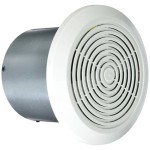How To Lay Bathroom Floor Tiles
Laying bathroom floor tiles is a rewarding project that can significantly enhance the aesthetic appeal and value of a home. However, it requires careful planning, proper preparation, and precise execution. This article provides a comprehensive guide to the entire process, from initial considerations to the final touches, ensuring a professional-looking and durable tiled bathroom floor.
Planning and Preparation: The Foundation for Success
Before commencing any physical work, meticulous planning is essential. This stage involves several key steps, each contributing to a smoother and more successful tiling experience.
1. Accurate Measurement and Material Calculation: The first step is to accurately measure the dimensions of the bathroom floor. This measurement will determine the amount of tile required. Calculate the square footage of the floor by multiplying its length by its width. Add an extra 10-15% to this figure to account for cuts, waste, and potential breakage during installation. This overage is crucial, especially for intricate patterns or tile designs requiring significant cuts.
2. Tile Selection: Choosing the right tile is a critical decision. Consider factors such as tile material (ceramic, porcelain, natural stone), size, shape, color, texture, and slip resistance. Porcelain tiles are generally recommended for bathroom floors due to their durability, water resistance, and low porosity. Smaller tiles often make sloping floors easier to manage as many joints need to be grouted. The aesthetics of the tile should complement the overall bathroom design and desired ambiance. Ensure that the chosen tiles are suitable for wet environments.
3. Subfloor Inspection and Preparation: The subfloor is the foundation upon which the tiles will be installed. It must be structurally sound, level, and clean. Inspect the subfloor for any signs of damage, such as cracks, rot, or unevenness. Repair any deficiencies before proceeding. If the subfloor is wood, ensure it is properly supported and free from excessive flex. Concrete subfloors should be clean and free from debris, grease, or old adhesive. A self-leveling compound may be necessary to create a perfectly level surface, particularly if significant irregularities exist. Clean the subfloor with a vacuum and a damp mop. Allow it to completely dry before applying any primer or adhesive.
4. Gathering Tools and Materials: Having all necessary tools and materials readily available is crucial for efficiency and preventing interruptions during the tiling process. Essential tools include: * Tile cutter (manual or wet saw) * Notched trowel (size appropriate for the tile being used) * Rubber mallet * Tile spacers * Level (spirit level and laser level if available) * Tape measure * Pencil or marker * Grout float * Grout sponge * Buckets * Mixing paddle and drill * Safety glasses and gloves * Knee pads
Essential materials include: * Tiles * Thin-set mortar (adhesive) * Grout * Sealer (for grout and certain types of tile) * Primer (if required by the adhesive manufacturer) * Clean water * Rags or sponges
5. Planning the Layout: Before applying any adhesive, dry-lay the tiles to determine the optimal layout. This step allows for visualizing the final appearance and making necessary adjustments to minimize cuts and ensure a balanced look. Start by finding the center of the room and marking it with intersecting lines. Lay out the tiles along these lines, working towards the walls. Adjust the starting point if necessary to avoid narrow slivers of tile along the edges. Consider the placement of fixtures and obstacles, such as toilets and pipes, and plan cuts accordingly. Use tile spacers to maintain consistent joint widths during the dry-lay.
Tile Installation: Applying Adhesive and Setting Tiles
Once the planning and preparation phases are complete, the actual tile installation can begin. This stage requires precision and attention to detail to ensure a professional and durable finish.
1. Mixing the Thin-Set Mortar: Thin-set mortar is the adhesive used to bond the tiles to the subfloor. Follow the manufacturer's instructions carefully when mixing the mortar. Add water gradually to the dry powder, mixing with a mixing paddle attached to a drill until a smooth, creamy consistency is achieved. Avoid adding too much water, as this can weaken the adhesive. Allow the mortar to slake (rest) for the recommended time before remixing and using.
2. Applying the Mortar: Use the notched trowel to apply the thin-set mortar to the subfloor. Hold the trowel at a 45-degree angle and spread the mortar in a consistent layer, creating ridges with the notches. The size of the notches should be appropriate for the size and type of tile being used. Apply the mortar to a small area at a time, typically only enough for a few tiles, to prevent it from drying out before the tiles are set. Ensure that the mortar is applied evenly and that there are no gaps or voids.
3. Setting the Tiles: Carefully place the tiles onto the mortar, pressing them firmly into place. Use a slight twisting motion to ensure good contact with the adhesive. Insert tile spacers between the tiles to maintain consistent joint widths. Use a level to check that the tiles are flat and aligned correctly. If necessary, gently tap the tiles with a rubber mallet to adjust their position. Remove any excess mortar that squeezes out between the tiles with a damp sponge. Work systematically across the floor, following the planned layout. Regularly check the level and alignment of the tiles to ensure a uniform and professional appearance.
4. Cutting Tiles: Cutting tiles is often necessary to fit them around fixtures, walls, and other obstacles. Use a tile cutter for straight cuts and a wet saw for more complex or angled cuts. Measure the required cut carefully and mark it on the tile with a pencil or marker. When using a tile cutter, score the tile along the marked line and then snap it along the score. When using a wet saw, feed the tile slowly and steadily through the blade, following the marked line. Wear safety glasses and gloves when cutting tiles to protect yourself from injury.
5. Curing the Adhesive: Allow the thin-set mortar to cure completely before proceeding to the grouting stage. The curing time typically ranges from 24 to 72 hours, depending on the type of mortar and the environmental conditions. Avoid walking on the tiles during the curing period to prevent them from shifting or becoming dislodged.
Grouting and Finishing: Completing the Project
The final stage of laying bathroom floor tiles involves grouting and finishing, which are essential for sealing the joints, protecting the tiles, and enhancing the overall appearance of the floor.
1. Mixing the Grout: Choose a grout color that complements the tiles and the overall bathroom design. Mix the grout according to the manufacturer's instructions, adding water gradually until a smooth, creamy consistency is achieved. Avoid adding too much water, as this can weaken the grout. Allow the grout to slake (rest) for the recommended time before remixing and using.
2. Applying the Grout: Use a grout float to apply the grout to the tile joints. Hold the float at a 45-degree angle and spread the grout diagonally across the joints, pressing it firmly into the spaces between the tiles. Ensure that all the joints are completely filled with grout. Remove any excess grout from the surface of the tiles with the grout float.
3. Cleaning the Grout: After allowing the grout to set for the recommended time (typically 15-30 minutes), use a damp grout sponge to clean the excess grout from the surface of the tiles. Rinse the sponge frequently and wring it out thoroughly to avoid leaving streaks or residue. Work in small sections, cleaning the tiles in a circular motion. Be careful not to remove too much grout from the joints. Allow the grout to cure completely before applying any sealer.
4. Sealing the Grout: Apply a grout sealer to protect the grout from stains, moisture, and mildew. Follow the manufacturer's instructions carefully when applying the sealer. Use a small brush or applicator to apply the sealer to the grout lines. Allow the sealer to dry completely before using the bathroom floor.
5. Final Cleaning and Inspection: After the grout sealer has dried, perform a final cleaning of the bathroom floor. Use a mild detergent and a clean mop or sponge to remove any remaining residue or dirt. Inspect the floor carefully for any imperfections or defects. Touch up any areas that require attention. Once the final cleaning is complete, the bathroom floor is ready for use.
By following these steps carefully, individuals can successfully lay bathroom floor tiles and create a beautiful and durable surface that will enhance the value and enjoyment of the home.

Laying Floor Tiles In A Small Bathroom Houseful Of Handmade

Laying Floor Tiles In A Small Bathroom Houseful Of Handmade

How To Lay Bathroom Tile 5 Easy Steps Rubi Blog Usa

Big Tile Or Little How To Design For Small Bathrooms And Living Spaces S Of America

Plank Tile Bathroom Flooring Happihomemade With Sammi Ricke

Subfloor For Tile Installation Everything You Need To Know

How To Tile A Bathroom Floor Wickes

How To Tile A Bathroom Floor In 5 Steps Domino

Installing Tile Floor For The First Time How To Lay Crafted Work

How To Tile A Bathroom Floor Wickes







